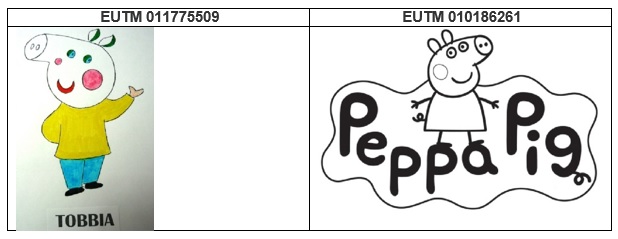A confusing story about two little pigs
Judgement of the General Court of 21 March 2019, case no. T-777/17
Most people in the EU probably know the children’s series Peppa Pig and the main character a little pig called Peppa. There is no doubt that the rights associated with the series, including the image of characters and trademarks, are of great value and certainly there are many dishonest entities that attempt to draw benefits from these rights.
On principle, the judgment of the General Court (case no. T-777/17) seems to be fair. The General Court invalidated the trademark TOBBIA EUTM 011775509, shown below in the table, based on the Peppa Pig trademark EUTM 010186261. There is no doubt that the intention of the applicant of the former mark was to take an unfair advantage of the image of the well-known character. What is, however, doubtful is the legal basis of the decision, which was art. 8 (1) (b) of Regulation No 207/2009, i.e. the existence of a risk of confusion between the trademarks. Both marks were registered for the same goods in class 25 (clothing, footwear, headgear).

The Cancellation Division of the EUIPO dismissed the trademark owner’s motion (Entertainment One UK Ltd). The First Board of Appeal upheld the appeal and the TOBBIA mark was annulled in its entirety. The General Court upheld the decision of the Board. The Court confirmed that the similarity of the shape and individual elements of the pigs’ heads is enough to make the trademarks similar. Even differences, such as different body and limbs, colors, different position of figures do not eliminate this similarity. The court recalled the principle that an average consumer does not analyze individual elements of the marks, but perceives them globally.
Moreover, the Court confirmed the similarity of the word elements TOBBIA and Peppa Pig. It reached a conclusion that the similarity is the result of using letters BB and PP in both trademarks as well as the last letter A. The Court also confirmed a conceptual similarity between the trademarks, as both trademarks refer to pigs and the verbal elements TOBBIA and Peppa will be considered by an average client as names. The owner of the TOBBIA mark argued that the TOBBIA trademark depicts a tapir and not a pig, although this argument certainly did not have any significance in the matter.
When assessing the risk of confusion, the Court found that in case of goods in class 25 (clothing, headgear, footwear), the visual perception of signs is of primary importance in the global assessment. Since the signs are similar and the goods covered by the registrations are identical, there is a risk of confusion in the case.
The judgement may be assumed to be based rather on the principle of fairness than on art. 8 (1) (b) of Regulation No. 207/2009 and the case-law issued on its basis. Certainly the TOBBIA trademark raises direct associations with the Peppa Pig trademark. Although a prerequisite of the likelihood of association between the signs has been maintained in the Regulation 2017/1001, it has been decided long ago that the associations themselves will not suffice to establish a risk of confusion (see, among others, Marca CV v. Adidas AG, Adidas Benelux BV, case no. C-425/98 ). Peppa Pig for sure is a well-known character from children’s films, but this is not tantamount to the increased distinctiveness of the Peppa Pig EUTM 010186261 trademark, or its reputation. In any event, the argument of the increased distinctiveness and renown of the mark were not raised in the judgement. Perhaps, the owner of the Peppa Pig trademark is entitled to a number of other marks from the same family, which would be another argument in favor of finding the existence of a risk of confusion in the case. However, this argument was also not raised in the case.
The judgement would not be controversial if the decision was issued on the basis of art. 8 (5) of Regulation No. 207/2009, i.e. an infringement of a trademark with a reputation. It seems that the risk of associations between the signs is evident, as well as drawing unjust benefits by the owner of the TOBBIA mark or causing other damage to the reputation or distinctive character of the Peppa Pig trademark. However, it seems that the relatively low degree of similarity between the signs, even with the identity of the goods, without taking into account other criteria of a comprehensive assessment of the risk of confusion, should not have been sufficient to invalidate the TOBBIA mark.
The judgement perfectly illustrates how difficult and subjective is an assessment of the similarity of signs, especially graphic signs. This is illustrated by the fact that the judgement did not raise doubts of other commentators (see e.g. http://ipkitten.blogspot.com/2019/04/do-tapirs-look-like-pigs-peppa-pig-eutm.html). In their opinion, among others, the case proves that in case of some trademarks, graphic elements, not verbal ones, decide on the existence of confusion.
Zobacz też:
Złożoność i wysoka subiektywizacja oceny w zakresie ryzyka konfuzji na przykładzie trzech najnowszych orzeczeń TSUE
Ryzyko konfuzji występuje, gdy odbiorcy mogą nabrać przekonania, że dane towary lub usługi oznaczone przeciwstawionymi znakami towarowymi, pochodzą z tego samego przedsiębiorstwa lub z przedsiębiorstw powiązanych gospodarczo. Przyjmuje się, że ocena ryzyka...
Przegląd orzecznictwa TSUE od 12.04 do 4.05.2025 r.
Poniżej przedstawiamy przegląd orzecznictwa TSUE w sprawach dotyczących własności intelektualnej za okres od 12 kwietnia 2025 r. do 4 maja 2025 r. T-338/24 - Mobility Trader przeciwko EUIPO - Cala and Ruiz (hey car select) - Sprawa dotyczyła postępowania w sprawie...
Szeroki monopol słownego znaku towarowego (decyzja Urzędu Patentowego RP z 15 kwietnia 2025 r. w sprawie Sp.180.2023)
31 lipca 2014 r. Browary Regionalne Jakubiak sp. z o.o. dokonała w Urzędzie Patentowym RP zgłoszenia słowno-graficznego znaku towarowego zawierającego słowo SMOK dla towarów z klasy 32, tj. piwa, piwa bezalkoholowego. (R.275353, zarejestrowany 17 kwietnia 2015 r.)...
Kontakt
Zapraszamy do kontaktu lub wizyty w naszej kancelarii
Warszawa
ul. Sobieszyńska 35,
00-764 Warszawa
tel. +48 664 948 372

